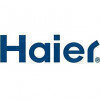


i
Blue
Star
Work with us
![]()
Filter interviews by
Blue Star Mechanical Engineer Interview Questions and Answers
Blue Star Mechanical Engineer Interview Experiences
2 interviews found
I applied via Walk-in and was interviewed in Jul 2023. There were 3 interview rounds.

(1 Question)
- Q1. Mechanical engineering questions
(1 Question)
- Q1. English communication round
I applied via Campus Placement and was interviewed in Nov 2021. There were 6 interview rounds.
Interview Questionnaire
10 Questions
- Q1. 1. Introduction
- Ans. Hi Sir, I am xyz(name)from Xyz. As far as my qualification was done my basic schooling was done from xyz and I have completed B tech from Xyz. As I am a fresher I have theortical knowledge but not having practical knowledge so I want to learn practical knowledge to contribute for your organization. My project is xyz and my role is xyz. My internship has completed from Xyz and I was situated for one month. My hobbies ar...
- Q2. 2. Family Background
- Q3. 3. Hobbies in Deep
- Q4. 4. What is Thermodynamics
- Q5. 5. Which type of engine we use in Train
- Ans.
Diesel engines are commonly used in trains.
Trains typically use diesel engines due to their high torque and fuel efficiency.
Electric engines are also used in some trains, especially in urban areas.
Steam engines were used in the past but are now rare.
Hybrid engines that combine diesel and electric power are becoming more common.
The type of engine used in a train depends on factors such as the distance it travels and the...
- Q6. 6. Draw the P,V and T,S diagram
- Ans.
P,V and T,S diagrams are graphical representations of thermodynamic processes.
P,V diagram shows the relationship between pressure and volume.
T,S diagram shows the relationship between temperature and entropy.
P,V and T,S diagrams are useful in analyzing thermodynamic cycles.
P,V and T,S diagrams can be used to determine the efficiency of a heat engine.
P,V and T,S diagrams are commonly used in the design of power plants a...
- Q7. 7. what is adiabatic process and Hyperbolic process
- Ans.
Adiabatic process is a thermodynamic process where no heat is exchanged with the surroundings. Hyperbolic process is a type of adiabatic process.
Adiabatic process occurs when there is no heat transfer between the system and its surroundings
Hyperbolic process is a type of adiabatic process where the pressure and volume of a gas are inversely proportional
Adiabatic compression of a gas can cause an increase in temperature
...
- Q8. 8. What is the difference between IDU and ODU
- Ans.
IDU and ODU are abbreviations used in air conditioning systems. IDU stands for Indoor Unit and ODU stands for Outdoor Unit.
IDU is the unit that is installed inside the room or building, while ODU is installed outside.
IDU is responsible for cooling or heating the air inside the room, while ODU is responsible for dissipating the heat outside.
IDU is connected to ODU through refrigerant pipes and electrical cables.
Examples...
- Q9. What is the Enthalpy and Entropy, In Entropy how heat loss happen
- Ans.
Enthalpy is the heat content of a system, while entropy is the measure of disorder or randomness in a system.
Enthalpy is the sum of internal energy and the product of pressure and volume.
Entropy is the measure of the number of ways energy can be distributed in a system.
Heat loss in entropy occurs due to the transfer of energy from a hot object to a cold object.
Entropy always increases in a closed system, leading to a d...
- Q10. What is the difference between AC and Cooler
- Ans.
AC is a device that cools and dehumidifies air while cooler is a device that cools water or other liquids.
AC is used to cool and dehumidify air in a room or building
Cooler is used to cool water or other liquids for drinking or industrial purposes
AC uses refrigerant to cool the air while cooler uses water or other liquids
AC is more expensive and complex than cooler
AC is more commonly used in residential and commercial b...
Interview Preparation Tips
Top trending discussions






Interview questions from similar companies

I applied via Walk-in and was interviewed before Aug 2020. There was 1 interview round.
Interview Questionnaire
1 Question
- Q1. About my last job description
Interview Preparation Tips

Interview Questionnaire
2 Questions
- Q1. Coding questions on data structures and oops
- Q2. Various questions on cv, projects, por's, etc
Interview Preparation Tips
Experience: Questions were normal like any other aptitude or coding tests.
Tips: Time given was enough for other sections but you need to hurry a little in aptitude part.
Duration: 60 minutes
Total Questions: 60
Round: Technical Interview
Experience: The questions were basic, some where well known like reversing a link list using recursion, designing of car parking lot using concept of oops, find tree height/diameter, etc.
Tips: 1. They ask you to write complete code on paper. This sometimes turn out to be a challenging task when you don't have compiler to correct you on basic things. Practice writing codes on paper.
2. They surely ask questions on oops, like polymorphism, inheritance, etc. besides their definition, also practice writing sudo codes to explain them
Round: HR Interview
Experience: Mainly i was asked questions on my internship experience and POR's.
Tips: They will try to grill you on some questions like 'Why we should hire you?', have a clear reason in your mind. Your other answers should not contradict with your reasons
General Tips: I don't know about other colleges but HP recruits small number of students from my university. Coding questions were average level and can easily be tackled. Many students were rejected after HR interview so don't take it lightly. They do grill you in a very good style if they are in doubt about your selection
Skills: willingness, Enthusiasm, Coding skills, Aptitude skills
College Name: IIT Guwahati

Interview Questionnaire
1 Question
- Q1. All technical questions raised

Senior Engineer Interview Questions & Answers
Haier Appliances Indiaposted on 29 Nov 2022
I applied via Naukri.com and was interviewed before Nov 2021. There were 2 interview rounds.

(2 Questions)
- Q1. About your current company & your role in there, major activity of your which helping your department.
- Q2. Draw some case study & explain improvements which you have done there
- Ans.
Improved efficiency of production line at XYZ manufacturing plant
Implemented lean manufacturing principles to reduce waste and increase productivity
Introduced automation in certain processes to reduce manual labor and increase accuracy
Optimized supply chain management to ensure timely delivery of raw materials
Trained and empowered employees to identify and solve problems on the production line
Implemented a continuous i...
Interview Preparation Tips

I applied via Walk-in and was interviewed before Feb 2022. There were 3 interview rounds.

(1 Question)
- Q1. All questions are related to the fieldwork.
(1 Question)
- Q1. Discuss about the previous company and their working projects, CTC and working cultures etc.
Interview Preparation Tips

(2 Questions)
- Q1. Past experience
- Ans.
I have over 10 years of experience in software engineering, focusing on full-stack development and team leadership.
Led a team of 5 engineers in developing a scalable e-commerce platform, resulting in a 30% increase in sales.
Implemented CI/CD pipelines that reduced deployment time by 50%, improving overall team efficiency.
Worked on a healthcare application that streamlined patient data management, enhancing user experie...
- Q2. About Btech Project
Interview Preparation Tips

I applied via Company Website and was interviewed before Aug 2023. There was 1 interview round.
Online coding test. Duration was 4 hours. Only one question was given. I had implement 4 APIs. Question was related to DP.
Interview Preparation Tips
- Dynamic programming
- Graph
- Tries

I applied via Recruitment Consulltant and was interviewed before Oct 2023. There were 3 interview rounds.
Coding round with medium complexity
(2 Questions)
- Q1. Implementation of linkedlist
- Ans.
A linked list is a data structure where each element points to the next element in the sequence.
Create a Node class with data and a reference to the next Node
Initialize a LinkedList class with a head Node
Implement methods to add, remove, search, and traverse the linked list
- Q2. Sorting algoritgms
(2 Questions)
- Q1. General expectations
- Q2. Role clarity discussion
Interview Preparation Tips
Skills evaluated in this interview
Blue Star Interview FAQs
Tell us how to improve this page.
Blue Star Interviews By Designations
- Blue Star Assistant Manager Interview Questions
- Blue Star Senior Engineer Interview Questions
- Blue Star Site Engineer Interview Questions
- Blue Star Service Engineer Interview Questions
- Blue Star Safety Officer Interview Questions
- Blue Star AC Technician Interview Questions
- Blue Star Graduate Engineer Trainee (Get) Interview Questions
- Blue Star AIR Condition Technician Interview Questions
- Show more
Interview Questions for Popular Designations
- Senior Engineer Interview Questions
- Production Engineer Interview Questions
- Project Engineer Interview Questions
- Junior Engineer Interview Questions
- Electrical Engineer Interview Questions
- Service Engineer Interview Questions
- Site Engineer Interview Questions
- Maintenance Engineer Interview Questions
- Show more
Overall Interview Experience Rating
based on 1 interview experience
Difficulty level
Duration
Interview Questions from Similar Companies
Blue Star Mechanical Engineer Reviews and Ratings
based on 10 reviews
Rating in categories
|
Assistant Manager
840
salaries
| ₹8.9 L/yr - ₹15 L/yr |
|
Senior Engineer
323
salaries
| ₹4.4 L/yr - ₹10 L/yr |
|
Deputy Manager
277
salaries
| ₹13.3 L/yr - ₹23 L/yr |
|
AC Technician
200
salaries
| ₹1.5 L/yr - ₹5 L/yr |
|
Safety Officer
156
salaries
| ₹2.5 L/yr - ₹6 L/yr |

OPPO

LG Electronics

Bajaj Electricals

Voltas
- Home >
- Interviews >
- Blue Star Interview Questions









